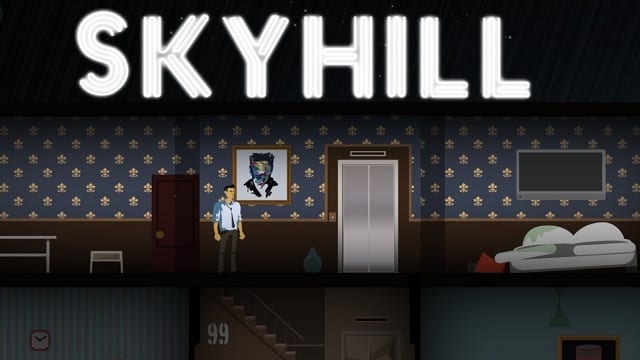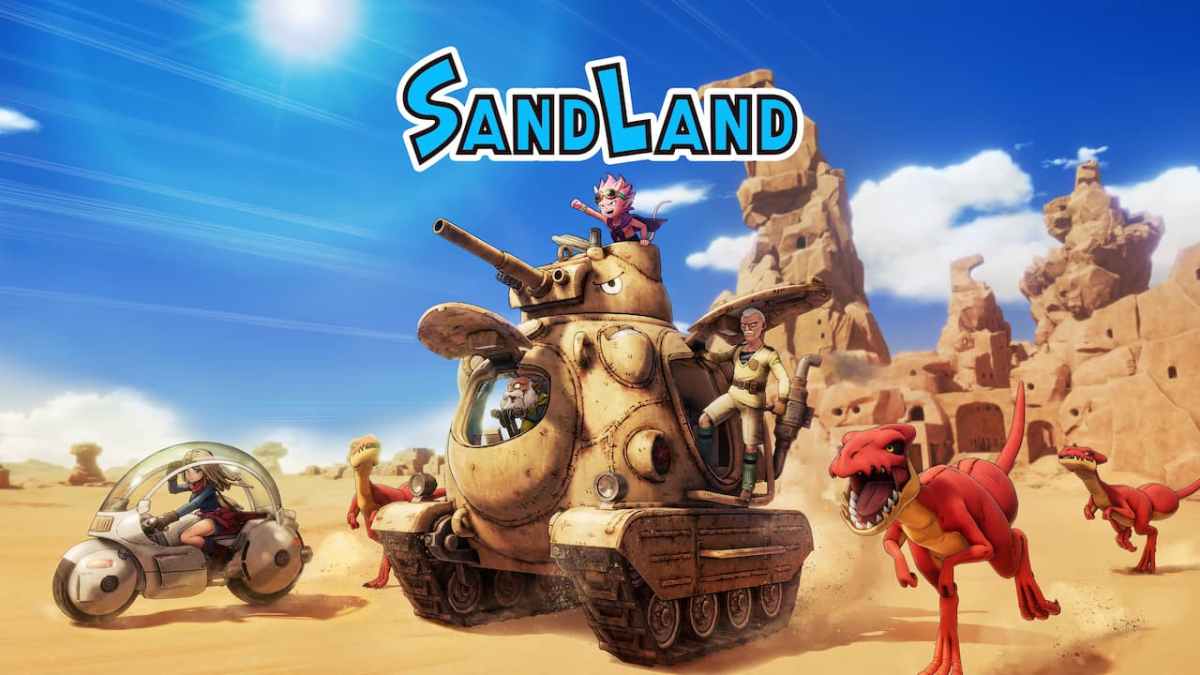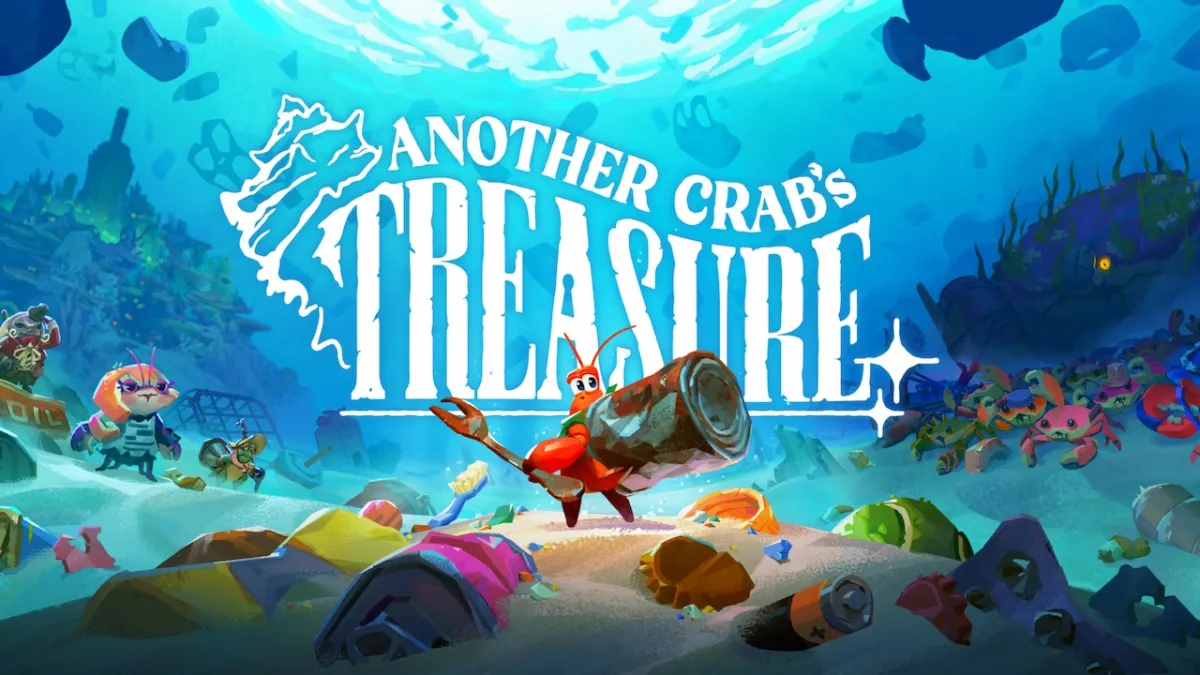It’s the one-percenters’ nightmare. You check into a high-end hotel (the titular Skyhill, in fact), get yourself the penthouse suite, and then World War 3 comes to a zombifying end thanks to biological warfare. You’re safe in your biologically-secured penthouse, sure! Until the food starts to run out, and you can hear growling outside your door, and – worst of all – room service just isn’t answering. Honestly, good help is hard to find these days. Bertie Wooster wouldn’t have had to deal with this shit.
Such is the premise of Skyhill, a roguelike/roguelike-like/roguelite/whatever in which you, as some guy, must fight your way down through 100 monster-infested floors to make your way out of a hotel.
As roguelikes go (screw it, I’m just going to call it one of those) Skyhill is remarkably simple. Each floor contains exactly three rooms. The central room is always the stairwell, and as such, you can technically get from the penthouse to the lobby in 99 downward moves, but you’ll inevitably be eviscerated if you try this. Each floor also has one room to the left and one room to the right, usually stuffed with an assortment of random goodies, ranging from crafting materials to first-aid to the ever-important food.
Yes: food. Skyhill forces you to keep track of both your health (which goes down when you take a whack from one of the hotel’s monstrous, mutated inhabitants) and your hunger (which goes down every time you move from room to room). If your hunger ever hits zero, then you’ll start taking damage as you move around, and unless you snack on something quickly, you’ll probably die quite soon after.
It’s pretty rare for a hunger system in a game to do something other than be really fucking annoying, but here, it actually works quite well. The main reason for this – and, indeed, the main unique twist that Skyhill has going for it – is down to crafting.
Whenever you take a trip back to your penthouse suite (usually via elevator-based fast-travel) you can use the facilities within to upgrade your own tools, and there’s a rather entertaining level of risk/reward involved.
Y’see, pretty much everything has a base nutritional value. You can just eat salad, for instance, or a piece of bread. But if you’ve upgraded your kitchen, then you can turn those base ingredients into something that’ll offer you far more in the way of nutrition than any individual item – and lots of them can be used in lots of recipes.
That bread’s worth 15 “hunger points”, for instance, but combine it with some butter to make a sandwich and it’s suddenly worth something like 44. Raw fish can be fried to make it worth more, but if your kitchen is a high enough level, you can instead combine it with some rice to make sushi. If you’ve already fried it and eaten it? Welp, too bad.
The same goes for the weapons you can make. A piece of scrap metal can be transformed into a blade or a piece of wire or a set of nails; those nails can be stuck onto a baseball bat, or that blade can be attached to a stick to create a makeshift spear. Alcohol can be used to make a delicious cocktail, or – with the aid of some rags or antibiotics – can be turned into bandages or a first aid kit.
Deciding how you want to use your limited resources, and whether a short-term gain is worth the risk of losing out on a superior long-term item, requires careful deliberation. And I like that.
Combat (and, I suppose, levelling up) are the other two core tenets of the game, although these don’t fare quite so well. Combat is a case of clicking on an enemy with your chosen weapon until one of you dies, although some depth is added with the aid of a Fallout-esque called shot system, letting you aim for different parts of the body in order to do more damage, but with a greater chance of missing. Sadly, though, this doesn’t seem to impact anything other than the raw damage and the hit chance; slashing something in its giant club of an arm doesn’t seem to make any different to the damage that arm will deal to you.

Always bear in mind your weapon’s damage variance. A 49% chance to hit the head, but even if it connects, it might actually do less damage than just going for the body.
Levelling, too, is heavily simplified. You’ve got four stats – Strength, Speed, Dexterity, and Accuracy. The first three impact the damage you deal with weapons suited towards them (a piece of pipe focuses on strength, for instance) as well as offering passive benefits in terms of your crit chance, your chance to dodge, and your chance of getting multiple turns in a row. Accuracy affects your hit chance. Every time you level up, you divvy out four skill points to support whatever weapons you’re using, and… that’s about it.
That, really, is Skyhill. You descend the tower, exploring rooms and fighting monsters. You repair elevators, upgrade your penthouse, get better weapons and better food, and gradually fight your way down to the lobby. Along the way you might find little bonus events, like notes detailing the state of the world, or cellphone messages directing you to certain rooms, or possibly even an old guy offering to trade you one item for another (which seems a bit bugged, because the last few times I’ve encountered him he’s always offered me the same item he wants). You keep going until you die, or until you succeed.
It’s mixed up a little bit more with Passive and Active perks, unlocked for every ten floors you descend, but they don’t hugely impact the game. Amnesia lets you “reset” the block of ten floors you’re currently on once every 100 moves, for instance, while Addict prevents you from taking damage from spoiled food, but massively increases the damage inflicted by hunger.
I’ve got a laundry list of minor complaints – locked rooms and the keycard system both feel like ideas that were thrown in despite never actually being properly developed, and the crafting system really needs a better UI considering the sprawling, opaque tech tree – but they’re largely unimportant.
Rather more significant are a trio of other problems. First, there are a grand total of around six or seven enemies in the game, and you’ll have seen pretty much all of the computers/cell phones/random events within a few playthroughs. So yeah, it desperately needs a bit more content.

Right, so… the sickle needs a cleaver, a blade, a metal scrap, and some electrical tape. But I’ll need at least one more metal scrap to make the blade, and the electric tape is rags and alcohol, and… what do I need to make a cleaver, again?
Second, it’s not exactly wonderfully balanced, in that if you make it down 70 floors, then you seem pretty much guaranteed a win. At that point you’ll have encountered every enemy so you’ve clearly got the weapons to deal with whatever you encounter, and that means you’ve almost certainly upgraded your suite enough that you’re not likely to run out of food, either. There’s less a gradual difficulty curve and more a sudden point at which the difficulty totally falls off unless enemies get repeated crits and extra turns. It also doesn’t help that there are dozens of different weapons, but even on Hard, getting anywhere near the end of the tech tree usually makes you an unstoppable murderbeast.
Third, it’s way too focused on luck. I don’t mind dying because I misused my resources – that’s fine. Anyone who’s ever played Nethack or ADOM or basically any other good roguelike is used to dying due to their own idiocy, and even FTL could put you into situations that left you scrambling to survive. But if you go down 5 floors without finding a weapon and there’s an enemy on the stairwell, or if you’re 20 floors down and you still haven’t found the brick you need to upgrade your kitchen to the second rank, then you’re pretty much just plain screwed.
The simplified nature of the game means that there isn’t a great deal of room for tactics, either; bumping into a random high-level enemy in Nethack is bad, sure, but you’ve normally got enough room to work around it. You can lead it on a wild chase, or risk an unidentified wand, or use any of the other myriad interlinking systems to keep yourself alive just one more turn.
In Skyhill… not so much. If an enemy is in the stairwell, you have to kill it before you can move on. If you don’t have the means if killing it – if your weapon is inadequate, and you don’t have the resources to attack, flee, heal up, and repeat – then you’re pretty much fucked. And this ties into that balance thing, again, because this is far more likely to happen within the first 30 floors. Once you get rolling, you generally start snowballing in power. Upping the difficulty certainly makes things trickier, but it doesn’t address these issues.
Yet despite all of this, I’ve pumped 16 hours into the game, and I’m probably going to go and play it again because I’m still missing one ending.

I’m fine in this situation (and I have a CLOCKWORK AXE!) but enemies getting crits, or enemies who routinely get two or three extra goes, are among the most dangerous situations in the entire game.
Skyhill is a simple roguelike, basically, and that simplicity works both for and against it. I’ve detailed the “against” column pretty heavily, but it also means that it’s easy to casually jump into for a quick game, and it doesn’t require you to learn a huge set of rules and interactions before you have a hope of success.
Its comic book-styled art looks lovely and it’s got a lot of much-appreciated little features, like the ability to speed up all of the animations… but it’s also a game with some heavy fundamental flaws and a lack of content which makes me reticent to recommend it too highly at its £11.99 price point. None of the problems are insurmountable: there’s enough of merit here that I’d love to take a look at it again after a few patches, some DLC, or a sequel, because I reckon developers Mandragora are onto something here. It just needs refinement.
And hey: despite my many, many misgivings, I’ve spent 16 hours with it. Not 16 hugely satisfying hours of continual analysis and tension, and gradual learning and gradual progress in the hopes of someday making it another 10 floors down, but 16 hours of general idle enjoyment. And that, sometimes, is enough.










